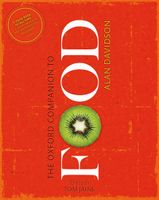Save 25% on ckbk Premium Membership with code FALLFLAVORS 🍁
Bois de Panama
Published 2014
The first of these, and the one which has prior claim to the name bois de Panama, is the dried inner bark of Quillaja saponaria, an American tree. It is clear from Seigneurie (1898) that this dried bark was an article of commerce at the end of the 19th century, and that it had a food use. If it is brought to the boil in plenty of water and then left to simmer for a couple of hours, or until the volume of water has been greatly reduced; and if the result is strained and left to cool, and then whisked, it becomes foamy and brilliant white. A warm sugar syrup can then be incorporated in this foam, producing a white elastic mousse with excellent keeping qualities. This mousse is called naatiffe (spelled in various ways, e.g. natef) and is used in the Middle East—especially Egypt and the Lebanon—to accompany sweetmeats such as karabij (finger-shaped pistachio nut pastries). The naatiffe has a faintly bitter-sweet (almondy, say some) taste and plays a role more or less comparable with that of whipped cream in western countries.
Become a Premium Member to access this page
Unlimited, ad-free access to hundreds of the world’s best cookbooks
Over 160,000 recipes with thousands more added every month
Recommended by leading chefs and food writers
Powerful search filters to match your tastes
Create collections and add reviews or private notes to any recipe
Swipe to browse each cookbook from cover-to-cover
Manage your subscription via the My Membership page
Part of
Advertisement
Related Recipes
-
-
-
-
Related Reference
-
-
-
-
Advertisement



